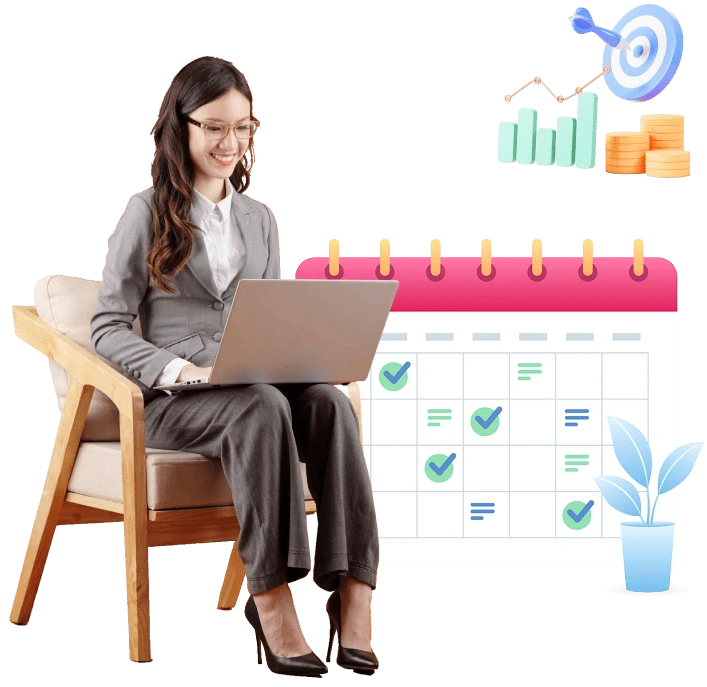A Certified Scrum Master® in the non-IT industry is as crucial as in the Software environment. The professional has skills and knowledge that can be applied to both sectors. The Scrum Masters can experiment and innovate in non-software organizations. Scrum and Agile methodologies don’t have boundaries limited to Software.
The Scrum Masters can handle roles and responsibilities efficiently. They can handle complex projects and can deliver successful values for the business. A certified professional will always have more preference over a non-certified one. This blog lets you know in detail about the Certified Scrum Master®.
Above, we get an overview of Scrum Masters' role in the industry. You can also be a certified Scrum Master, but before that, you must pass the certification exam. Let us first look at what exactly is CSM certification.
Before delving into the CSM in Non-Software Environment, let's look at the fundamentals of Scrum Master® Certification.
What is CSM® Certification?
A Certified Scrum Master® is an entry-level credential that provides an overview of handling Scrum and Agile methodologies in project or product deliverables. The certification is offered by the accredited body, Scrum Alliance. To obtain this certification, professionals must complete a two-day training course and pass an online exam. This certification gives the professionals a clear picture of Scrum terminologies, practices, tools, and principles. These skills and expertise help them with the CSM exam.
Certified Scrum Master® (CSM) certification is one of the most recognized certifications in the Agile and Scrum industry. It's important to note that the role of a Scrum Master is way more than just in the IT industry. Professionals can leverage the certification advantage in a variety of non-software environments. The principles and practices of Scrum can be applied across industries, making the CSM® certification a valuable asset for any professional.
Earning a certified Scrum Master certification helps professionals to master Scrum Master with real-world Scrum activities. The training guides candidates with the CSM® certification benefits, roles and responsibilities, and more.
With the increasing demand for certified Scrum Masters in today’s scenario, obtaining the certification can be highly beneficial. It enhances your competencies in handling complex projects, promotes collaboration with proper client communication, and significantly boosts your speed in handling any task, making you a valuable asset in any industry.
CSM in Non-Software Environment
Irrespective of the software or non-software work environment, the versatility of Scrum and Agile principles is a potent tool. These principles, such as collaboration, efficiency, and adaptability, are not limited to a single industry. They can be harnessed and leveraged in diverse industries, empowering professionals to adapt and thrive in any setting.
- Defining and prioritizing the goals based on the deliverable value and importance of the project.
- Be sure that each team member understands and is engaged with the Agile & Scrum Principles; by promoting customer collaboration, they respond to changes & deliver working Solutions.
- Determine each member associated with the organization, such as customers, external clients, internal department members, business stakeholders, and industry end-users.
- Be prompt and ready to accept project development and lifecycle changes. You must also be flexible when adjusting to sudden plan changes.
- Acknowledge the areas of continuous improvement by collecting regular feedback and encouraging a culture of timely review evolution.
- Regular updates by team members on the work progress through stand-up meetings. The agenda must include the challenges faced in activities, how to mitigate them, and how to plan the day's tasks accordingly.
- The team must be together as cross-functional team members with all the required skills to match the project needs.
- The team must be clear and knowledgeable about achieving goals and working towards a successful outcome.
- The tasks must be broken down with efficient planning and execution into small, manageable tasks focusing on delivering values in a short sprint.
- Ensure that team members communicate clearly and openly to align project goals, objectives, progress, and desired outcomes.
- Collect timely feedback from the end-users and stakeholders to focus on improvement areas and refine the project deliverables.
- Learn from failures and strategize from them. Celebrate each team member's milestone or achievement.
- Use agile tools and techniques, such as retrospectives, Kanban boards, and burndown charts, to simplify team collaboration and project management.
Examples of Agile and Scrum Applications in Non-Software Environments
Advertising Campaign
For example, you are creating and managing an advertising campaign for a new product for fitness. The campaign could be split into 'user stories 'in Scrum and Agile. These are simple, concise descriptions of a feature from an end-user perspective. Each user story represents a small work the team can complete in a sprint. User stories for this campaign could include market research, identifying the target audience, creating content, and selecting advertising channels. Dedicated sprints to each story will enable the team to respond to market changes promptly, optimize content based on performance, and continuously refine the campaign strategy for maximum impact.
Public Relations Campaign
Agile methodologies can help an organization promote a positive image in public relations. Media engagement, crisis management, content creation, and stakeholder communication are a few aspects of user stories. Sprints allow the team to respond to evolving public sentiment promptly, adapt communication strategies as needed, and continuously clarify the narrative. This practice helps maintain a favorable public image.
Event Organization
Take, for example, a large-scale organization arranging a corporate event. In Scrum and Agile, the planning process could be broken down into 'sprints '. Sprints are time-boxed periods, usually one to four weeks long, during which a specific work must be completed and ready for review. Agile will allow the team to break the event planning into manageable user stories: venue selection, guest list management, logistics planning, and post-event evaluation. Each story will have its dedicated sprint, which will also ensure that the planning process is adaptable to unanticipated changes, feedback from the attendees is addressed immediately, and the overall event evolves positively with each iteration.
Conclusion
These are just a few examples of how Scrum Master principles can be applied in a non-software environment. By scaling agile practices and adapting them to the needs of the organization, professionals can significantly enhance communication, collaboration, and the fast delivery of values. These principles prepare businesses for changing conditions and requirements, making Certified Scrum Masters in Non-Software Situations as impactful as in the IT industry. This should inspire and motivate professionals to explore the potential of CSM certification in their respective industries.






















